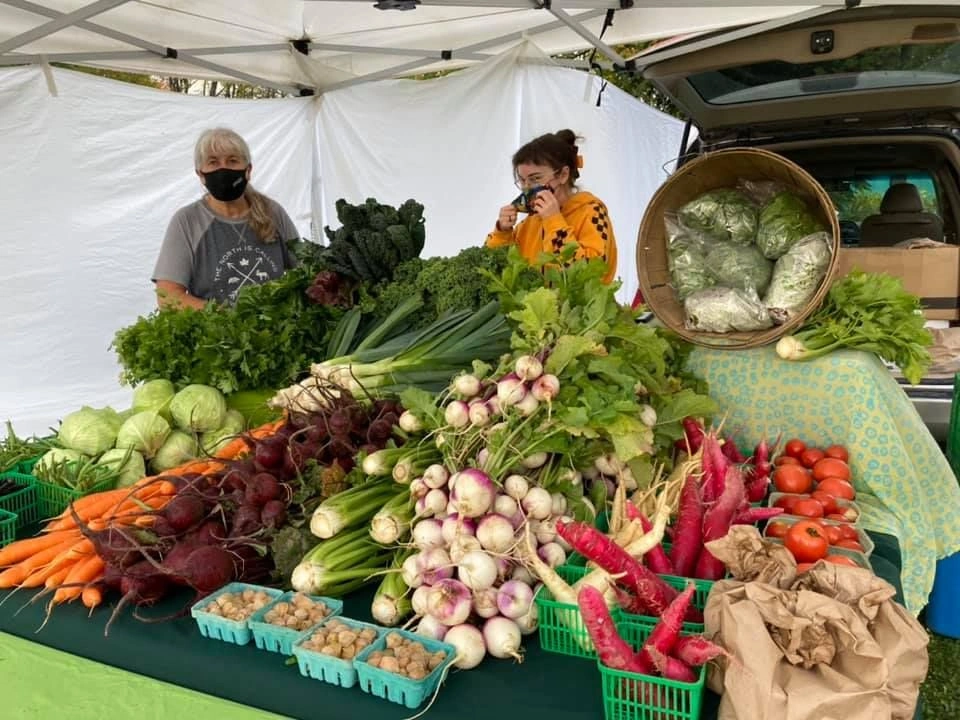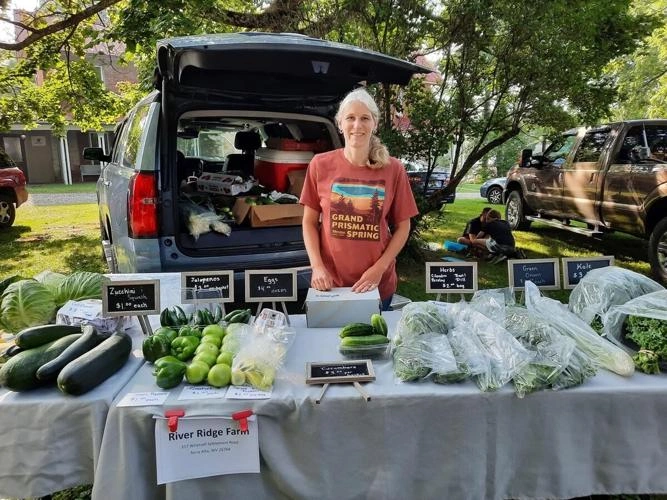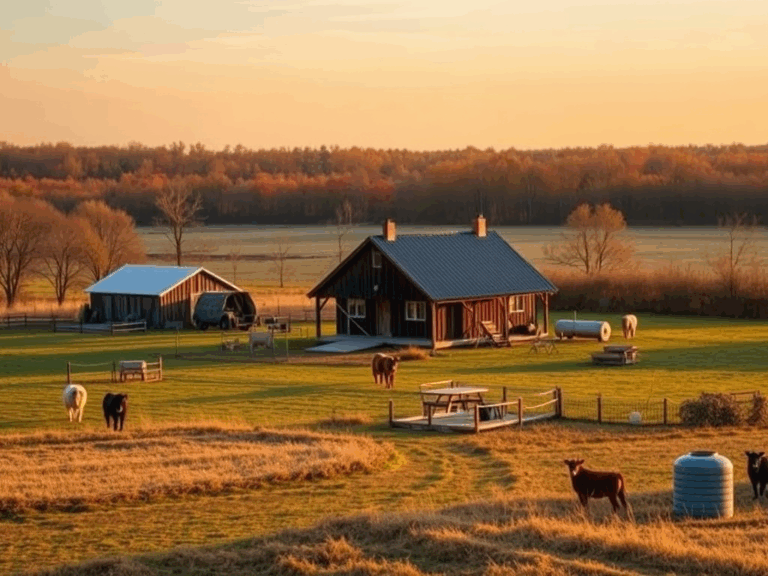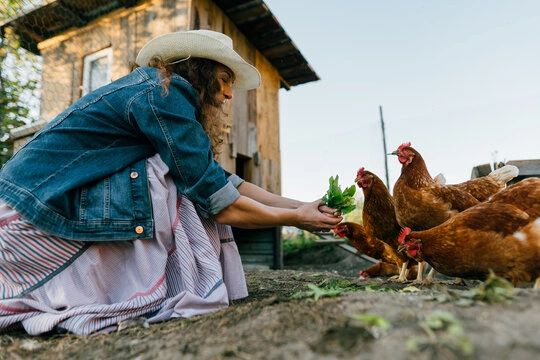Listen, if you’re drowning in eggs like I am right now, staring at cartons stacked three deep in the fridge while your chickens are out there acting like they’re running some kind of avian pyramid scheme, this one’s for you.
Between the supply chain chaos of the last few years and everyone suddenly realizing that maybe depending entirely on big corporations for food wasn’t the genius move we thought it was, Christian and I have been absolutely ramping up our production. Partly because we like eating actual food, and partly because our community deserves better than whatever mystery ingredients are hiding in grocery store “bread.”
But here’s the thing nobody warns you about when you start producing serious quantities of food: you’re going to have so much extra stuff. And I’m not talking about “oh, I have three extra tomatoes” levels of extra. I’m talking about “I could literally open a farmer’s market booth with just my surplus” levels of abundance.
The good news? Farmers and homesteaders have been solving this exact problem for literally generations with roadside stands. The even better news? Opening one doesn’t require you to get an MBA or sell your soul to venture capitalists.
But here’s where I’m going to stop you before you get too excited: you can’t just throw some vegetables on a card table and call it a day. There are actual rules, permits, and insurance considerations that’ll bite you if you’re not careful. Trust me, I learned some of this the hard way.
What is a Roadside Stand?
A roadside stand is basically the OG direct-to-consumer business model. It can be anything from a literal pallet of pumpkins sitting next to the road to a full walk-in building that looks like something from a lifestyle blog. The whole point is cutting out the middleman and selling directly to people driving by.
In most places, a seasonal roadside stand is considered a temporary marketing site, which is bureaucrat-speak for “you probably don’t need as many permits as a permanent business.” But if you’re thinking about a permanent structure that’s open year-round, some states will classify that as a farm market, which comes with different rules.
Here’s my advice: figure out whether your state considers what you’re planning a farm stand or a farm market before you start building anything. The permit requirements can be totally different, and you don’t want to find out you needed special approval after you’ve already invested time and money.
Reasons Why You Should Start a Roadside Stand
Let me be real with you about why this makes sense, especially right now:
Extra Funds
A roadside stand is basically monetizing work you’re already doing. You’re growing food anyway. You’re taking care of animals anyway. This just turns your surplus into actual money instead of compost. It’s like the homestead equivalent of selling your old clothes on Depop, except instead of fast fashion regret, you’re selling actual nutrition.
No-Waste
If you’re anything like me, watching perfectly good food go to waste makes you feel like you’re personally failing at life. A roadside stand turns that surplus into someone else’s dinner, which feels infinitely better than watching it rot in your crisper drawer.
Community
Here’s something nobody talks about enough: homesteading can be isolating as hell. You’re out there living your best Little House on the Prairie life while everyone else is ordering DoorDash and complaining about inflation on Twitter. A roadside stand gets you connected with your actual neighbors again, which is something we all desperately need more of.
Keep in mind, though, this isn’t passive income. You can’t just set up a cash box and expect money to appear. It requires daily commitment and actual customer service skills.
What Type of Roadside Stand Will You Start?

The Roadside Stand Structure
Your roadside stand can be as basic or as extra as you want it to be. I’ve seen everything from overturned milk crates to full-blown Instagram-worthy setups that probably cost more than my first car.
Roadside Stand Structure Ideas:
- Table (the classic)
- Crates (rustic vibes)
- Large boxes (budget-friendly)
- Shelves (organized chaos)
- Old refrigerator (genius for keeping things cool)
- Walk-in shed (when you’re ready to commit)
- Pallets (Pinterest-approved)
- Mobile cart (for the nomadic approach)
- Old truck (maximum aesthetic points)
Here’s the thing: presentation absolutely matters. A roadside stand that looks like you just dumped a bunch of vegetables on a card table isn’t going to perform as well as one that looks intentional. You don’t need to spend a fortune, but you do need to make it look like you care about what you’re selling.
Start simple if you’re new to this. You can always upgrade as you figure out what works and what doesn’t. Every successful roadside stand I know started with someone learning by doing, not by creating the perfect setup on day one.
Hours Open, Self-Service or Manned?
Most of us homesteaders still have day jobs because, surprise, farming doesn’t always pay all the bills immediately. This makes setting consistent hours challenging, especially since you want to be open when people are actually driving by.
You’ve got two main options:
Manned – Someone’s there during business hours to handle transactions and answer questions. This gives you better customer service and probably higher sales, but it requires more time commitment.
Self-Service – The honor system approach where customers take what they want and leave money in a cash box. This works better for people who can’t be tied to a schedule, but you’re basically trusting strangers with your livelihood.
Honestly, most successful stands I know do a hybrid approach. Maybe you’re there on weekends when you can provide that personal touch, but during the week it runs on the honor system. Design your operation around your actual life, not some idealized version where you have unlimited time.
Where Will Your Roadside Stand be Located?
Location isn’t just about convenience for you – it’s about whether anyone will actually find and access your stand. Two crucial factors determine success: traffic volume and accessibility.
1. Potential Customer Traffic
This should be obvious, but I’m going to say it anyway: if nobody drives by your stand, nobody’s going to buy anything. Having your stand at the end of your driveway is perfect if you live on a busy road. If you’re way out in the middle of nowhere with maybe two neighbors, you need a different strategy.
Consider alternative locations like busy intersections, grocery store parking lots (with permission), or a friend’s property that gets more traffic. Just remember you might need permits or permission from landowners for these options.
2. Access to Your Roadside Stand
Your stand needs to be visible and safe to access. Think about:
- Capacity: How many people can browse at once without it feeling crowded?
- Parking: Can cars pull over safely without blocking traffic?
- Safety: Is your stand far enough from the road that customers aren’t dodging traffic?
- Distance: Can people make a quick stop without feeling like it’s a major expedition?
Your goal is accommodating both the “quick stop after work” customers and the “weekend browsing” customers. Both types are valuable, but they have different needs.
Rules, Permits, and Insurance
Here’s where things get bureaucratic and slightly annoying, but absolutely necessary. Every area has different requirements, and you need to know what they are before you start selling anything.
Your local extension office is usually the best place to start asking questions. They either have the answers or can point you toward someone who does. Don’t skip this step because “it’s just a small stand” – regulations don’t care about your scale, and fines are expensive.
Liability insurance is non-negotiable. I don’t care if you’re just selling eggs to neighbors. Accidents happen, lawsuits exist, and you need to protect yourself. Start by talking to your homeowner’s insurance agent about home business options. Many policies already have provisions for this kind of thing.
What Do You Plan on Selling?
This is where you need to decide: are you selling surplus, or are you planning extra production specifically for the stand?
Selling Surplus means you’re moving stuff you’d otherwise waste or can’t use. Think cucumber overflow when you’ve already made all the pickles your family can eat, or spring egg abundance when your chickens are basically showing off.
Planning Extra means you’re intentionally growing or producing more than you need because you know you can sell it. This requires more upfront planning but gives you more control over your inventory.
Potential Items for Your Stand:
- Extra produce (obviously)
- Eggs (the gateway drug of roadside stands)
- Honey (if you’re brave enough for bees)
- Maple syrup (seasonal gold)
- Baked goods (comfort food sells)
- Seedlings (especially in spring)
- Cut flowers (surprisingly popular)
- Homemade soap (value-added products)
- Poultry chicks (if you’re into that chaos)
- Crafts (diversify your offerings)
If you’re starting your first year, focus on selling what you already have. It’s hard to plan production when you don’t know what sells in your area yet.
Pricing and Selling Your Goods
Pricing isn’t just picking random numbers and hoping for the best. You need to do actual research and consider several factors:
- Quality matters: Organic, local, or specialty products should be priced accordingly
- Know your costs: Factor in what it actually costs to produce what you’re selling
- Understand your market: Price for your actual customers, not some idealized demographic
- Check the competition: See what other local stands are charging
- Track demand: Adjust pricing based on what moves quickly vs. what sits
Price things in increments that make giving change easy, especially if you’re running a self-service operation. Nobody wants to make change for $3.47 when they could price something at $3.50.
Make sure everything is clearly labeled with prices that are easy to read and understand. Confusion kills sales faster than bad produce.
Ways to Pay at Your Roadside Stand
Cash is still king for roadside stands, but technology has made other options possible. You can accept payments through apps like PayPal, Venmo, or even set up a simple card reader if you’re tech-savvy and your location has decent cell service.
Whatever payment methods you offer, make the instructions foolproof. If people can’t figure out how to pay you, they won’t buy anything.
Keep an inventory sheet where customers can write down what they took and how much they paid. This helps you track what’s selling and understand your customers’ preferences.
Marketing and Advertising Your Roadside Stand

You’ve put in all this work setting up your stand – now people need to know it exists. You don’t need a massive marketing budget, but you do need to get the word out.
Ways to Advertise:
Roadside Signs
Keep them simple with large lettering and minimal words. You want passing drivers to understand immediately what you’re offering without causing accidents.
Social Media
Facebook and Instagram are perfect for weekly updates about what’s available. Photos sell better than words, so show off your produce in all its glory.
Online Directories
Register with sites like Local Harvest and local farmers market directories. People actively search these when looking for local food sources.
Flyers
Old school but effective. Local businesses often have bulletin boards, and community centers usually welcome local food advertising.
Business Cards and Pamphlets
Leave these at your stand so customers can find you again and share with friends. Include your social media and contact information.
The goal is making it easy for people to find you and remember you exist when they need what you’re selling.
Are You Ready to Open a Roadside Stand?
A roadside stand can be an excellent way to generate income from work you’re already doing while serving your community with local food. The key is starting with realistic expectations and building up gradually.
Remember: this should make passing by and buying from you as convenient as possible for your customers. If you make it complicated, expensive, or inconvenient, people will just go to the grocery store instead.
Start small, learn what works in your area, and scale up as you gain experience and customers. Your roadside stand can become a valuable part of both your homestead economy and your local food system.
The hardest part is just starting. Once you’ve got your first stand up and running, you’ll quickly figure out what works and what doesn’t. And honestly? Even the mistakes teach you valuable lessons about your customers and your market.





